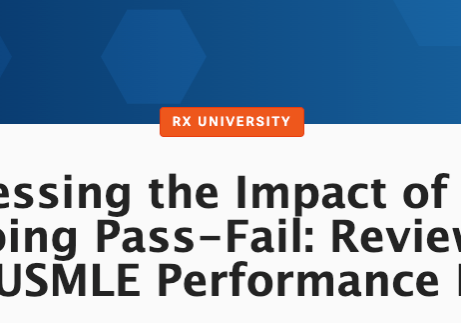By Patrick Sylvester
Part of what we’re hoping to do with these First Aid Team posts is to share with you things that we really wish (or were really glad) that someone had told us about a variety of things related to medical school, the USMLE exams, and everything else. With this in mind, I’d like to talk about laminated writing surfaces.
Laminated writing services?? Yes, that’s correct. Laminated writing surfaces (as they’re described in the 2014 USMLE Bulletin of Information) are quite possibly one of my favorite things—and on the day of your USMLE exam, you’ll probably feel the same way.
On the big day, just prior to entering the examination room, you’ll be given a piece of laminated paper and a marker. You’ll be asked to write down your Candidate Identification Number (CIN) on this sheet of paper. If I recall, this is something on the magnitude of 16 digits or so (numbers and letters). Despite your instinct to jot this down quickly, you’ll feel kind of silly/flustered (like I did) if your sloppy handwriting results in a series of error messages during login (in my case, having my upper-case Gs and 6s look suspiciously similar). Since you’ll be punching this code into the computer every time you re-enter the test, it’s worth it to take a little bit of time to write it legibly and in a place that won’t be smeared by a wandering hypothenar eminence.
Perhaps a more important little known fact about the potential of this laminated paper deals with what can best be referred to as “brain dumping.” I learned from a few friends in the class above me (who had, in turn, heard this from a popular Step 1 review course) that they wrote out on this sheet a set of formulas and factoids that they felt couldn’t stay in their head. They would do this, right as they sat down and prior to taking the test.
I thought that this was an interesting idea and it might be worth exploring. However, I couldn’t help shake the idea that this might be a little… less than legitimate. After all, the USMLE Bulletin of Information does make some threatening statements about a list of things that might result in an investigation of “irregular behavior” with resulting sanctions. However, it’s not clear from this list that writing down information on the laminated paper provided before starting the test is an “irregular behavior.” However, elsewhere in the USMLE Bulletin of Information, it clearly states “They (laminated writing surfaces) should only be used at your assigned testing session, and only after you have begun your examination by entering your CIN.”
 Therefore, my plan was to use the time allotted to the tutorial, since that is clearly after entering my CIN, to calmly write out some information that I felt would be useful to go back and refer to throughout the test. During the course of my studies, I had come up with a list of topics that I knew I didn’t feel comfortable with (In a later post, I’ll talk more about these uncertain subjects). I’ve attached one example (mine) of what this “brain dump” might look like.
Therefore, my plan was to use the time allotted to the tutorial, since that is clearly after entering my CIN, to calmly write out some information that I felt would be useful to go back and refer to throughout the test. During the course of my studies, I had come up with a list of topics that I knew I didn’t feel comfortable with (In a later post, I’ll talk more about these uncertain subjects). I’ve attached one example (mine) of what this “brain dump” might look like.
What’s included in this brain dump?
- G-protein-linked 2nd messengers (p. 244 FA2014)
- Basal ganglia pathways/Parkinson’s Disease
- Virus families by genome and envelope
- Brainstem nuclei and vascular territories
- Rough acid/base compensation approximations
What will your laminated writing surface look like?




Good idea!
Great idea! I think that statistical formulas that I never could remember would be great to add.
Is anyone here in a position to recommend Dresses & Jumpsuits? Cheers xox
how much cbd is in mothers milk